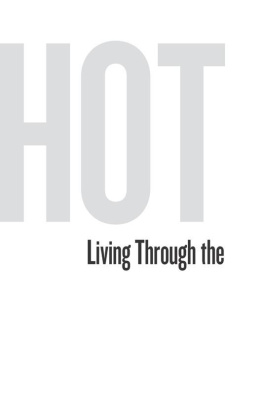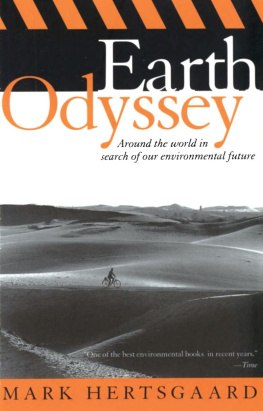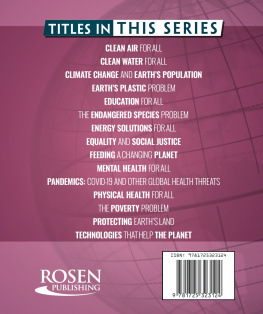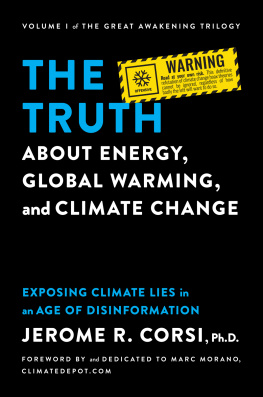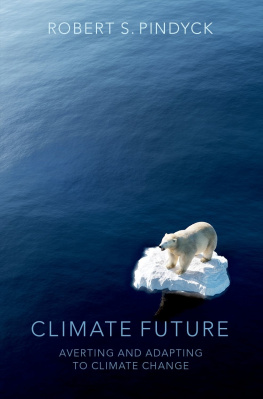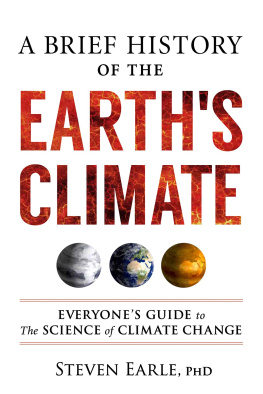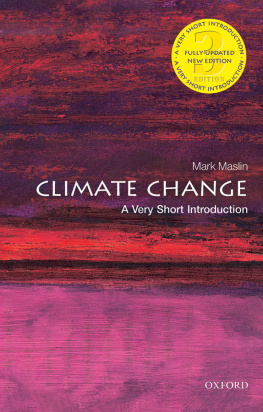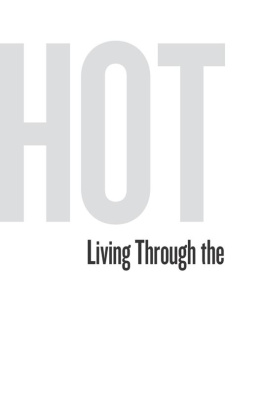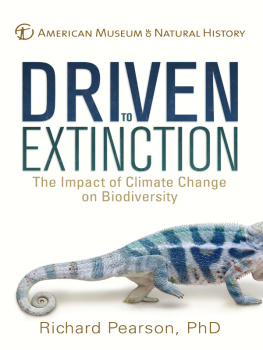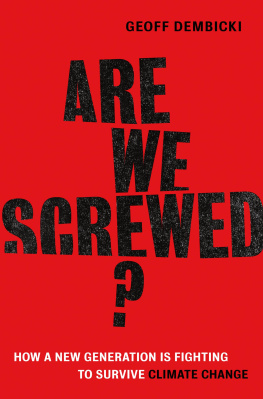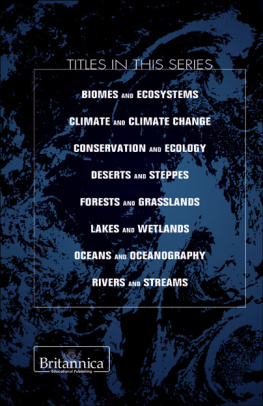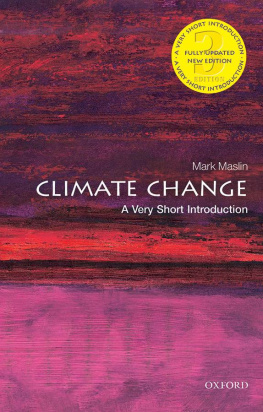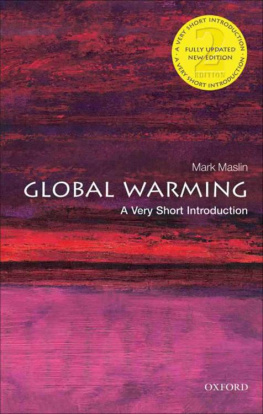Living Through the Next Fifty Years on Earth
Mark Hertsgaard
Table of Contents
HOUGHTON MIFFLIN HARCOURT
BOSTON NEW YORK 2011
Copyright 2011 by Mark Hertsgaard
ALL RIGHTS RESERVED
For information about permission to reproduce selections from this book,
write to Permissions, Houghton Mifflin Harcourt Publishing Company,
215 Park Avenue South, New York, New York 10003.
www.hmhbooks.com
Library of Congress Cataloging-in-Publication Data
Hertsgaard, Mark, date.
Hot : living through the next fifty years on earth / Mark Hertsgaard.
p. cm.
Includes index.
ISBN 978-0-618-82612-4
1. Global warming. 2. Climatic changes. 3. Global environmental change.
4. Human beingsEffect of climate on. I. Title.
QC 981.8. G 56 H 47 2010
304.2'5dc 22 2010012416
Book design by Brian Moore
Printed in the United States of America
DOC 10 9 8 7 6 5 4 3 2 1
Dedication
For my daughter, Chiara, who has to live through this
Contents
Prologue: Growing Up Under Global Warming
Living Through the Storm
Three Feet of Water
My Daughter's Earth
Ask the Climate Question
The Two-Hundred-Year Plan
Do You Know What It Means to Miss New Orleans?
In Vino Veritas: The Business of Climate Adaptation
How Will We Feed Ourselves?
While the Rich Avert Their Eyes
"This Was a Crime"
Epilogue: Chiara in the Year 2020
Acknowledgments
Notes
Index
Prologue: Growing Up Under Global Warming
Working on climate change used to be about saving the world for future generations. Not anymore. Now it's not only your daughter who is at risk, it's probably you as well.
MARTIN PARRY, co-chair of the Fourth Assessment Report,
Intergovernmental Panel on Climate Change
I covered the environmental beat for fifteen years before I became a father. Much of that time was spent overseas, where, like many other journalists, I saw more than my share of heartbreaking things happening to children. But they were always other people's children.
My first time was in the old Soviet Union, where I exposed a series of nuclear disasters that had been kept secret for decades by both the KGB and the CIA. One day, I visited the leukemia ward of the local children's hospital, where a dozen mothers and children had gathered to speak with me. Many of the kids were bald, thanks to the chemotherapy that was now being applied in a last-gasp attempt to save their stricken bodies. The mother of one heavyset girl could not stop sobbing. When her daughter stroked her arm to comfort her, the mother unleashed a deep, aching wail and fled the room. This woman, like the other mothers, knew what the children did not: the doctors expected 75 percent of these children to be dead within five years.
Soon after, I spent four months in the northeastern Horn of Africa, mainly covering drought and civil war. It was there, in a refugee camp in southern Sudan in 1992, that I first came face-to-face with starving children. In my mind's eye, I can still see the young mother as she entered the Red Cross compound, hoping to see a nurse. Unfolding the tattered cloth she had slung from her neck, the mother revealed a nine-month-old baby girl, a tiny creature with a grotesquely large skull and legs no thicker than my fingers. Like one of every eleven African children, this poor child would not live to see her first birthday.
Later still I visited China, where millions of children were breathing and drinking some of the most carcinogenic air and water on the planet. Crisscrossing the country in 1996 and 1997, I became the first writer to describe China's emergence as a climate change superpower, second only to the United States. To fuel its explosive economic growth and lift its people out of poverty, China was burning more coal than any other nation on earth, making its skies toxic and dark even on sunny afternoons. Some of the worst health effects were being measured in the northern industrial city of Shenyang. One afternoon I visited a heavy-machinery factory that ranked among the city's deadliest polluters. I arrived just in time to see the street fill with hundreds of children. Chattering and laughing, they walked in rows six abreast, returning home from school, inhaling poison with every breath.
In my journalism, I tried to draw the outside world's attention to the plight of all of these children, as well as to its causes and potential remedies. Emotionally, though, I could keep a distance. This was partly because, as I say, these were other people's children. But it was also, I now see, because I was not yet a parent myself. I did not really understand, viscerally, how it feels to see one's own child be sick, in danger, and perhaps facing death.
I found out soon enough.
My daughter was born in 2005, in San Francisco, at the end of a long and difficult labor. After many hours and much pushing and tugging, she finally emerged from her mother's body. By that time, the urgency of the situation had drawn a dozen nurses into the room. As they attended to their various taskslifting the baby onto her mother's chest, administering her first bathone nurse after another made the same observation.
"Wow, look how alert this baby is," the nurse in charge commented.
"I know," marveled a colleague. "Look at her eyes!"
Apparently, most newborns keep their eyes shut against the light of the new world. Not ours. Her blazing blue eyes were wide open. From the moment she got here, this little girl was awake on the planet.
When it came time to give her a name, her mother and I remembered these first moments of her life and decided to call her Chiara. In the Italian language of her ancestors, Chiara (pronounced with a hard C, Key-AR-a) means "clear and bright."
Everything seemed fine until two days later. We had taken Chiara home from the hospital. As scheduled, a nurse came to conduct a follow-up exam. A few hours later, a doctor called and told us to bring Chiara back to the hospital, to the intensive care unit, right away. The exam had found dangerous levels of bilirubin in her blood. Brain damage or worse could follow.
At the intensive care unit, Chiara was placed inside an incubator, a white gauze headband stretched around her little skull to protect her eyes. The nurses jokingly called it a raccoon mask. Day and night I sat beside the incubator, watching Chiara's yellowish body get drenched with vitamin Dladen light.
Yet as worried as I was, I also felt fortunate. Unlike the children I recalled in Russia, Africa, and China, Chiara had access to excellent medical care. Within three days, she had completely recovered, with no lasting damage, and was sent back home.
Six months later, though, a different threat arose to my daughter's life, and this time no quick fix was available. During a reporting trip to London in October 2005, I learned that the global warming problem had undergone a momentous transformation. Humanity, it turned out, was in a very different fight than most people realized. Now, no matter what we did, Chiara and her generation were fated to inheritindeed, spend most of their lives coping witha climate that would be hotter than ever before in our civilization's history.
Global Warming Triggers Climate Change
The most important interview I did in London was with Sir David King, the chief science adviser to the British government. King received me at his office high above Victoria Street, a few blocks west of Parliament. When he stood up to shake hands, I could glimpse the spires of Westminster Abbey over his shoulder. Though not a tall man, King projected an unmistakable air of command as he invited me to join him at a conference table. I was on assignment from

